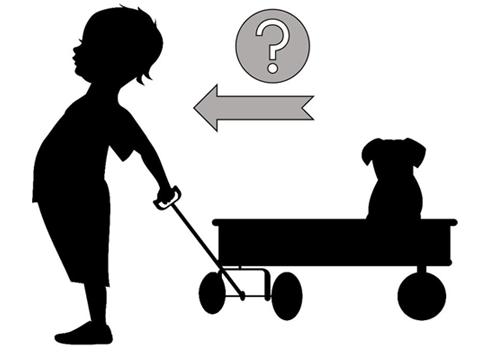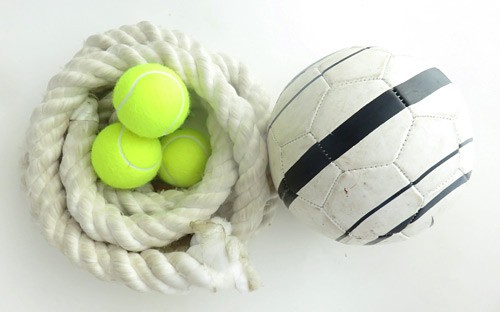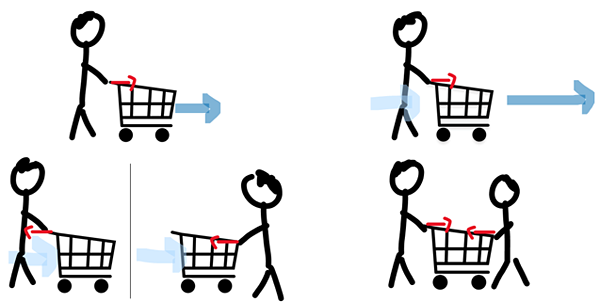Summary

Overview
Your kindergarten students are used to moving objects. They throw balls, play with toy cars, and sweep the floor, but how much do they think about these actions? In this fun, hands-on lesson, you will use a game (rolling balls) to explore how pushing and pulling affects an object's motion.
This lesson can be expanded with a second lesson exploring how objects can push each other, and how weight influences motion.
Learning Objectives
- Categorize actions as either pushes or pulls.
- Demonstrate, explain, and predict how pushes and pulls can start, stop, or change the direction of an object's motion.
- Demonstrate, explain, and predict how a stronger push or pull can create a bigger change in an object's motion.
NGSS Alignment
This lesson helps students prepare for these Next Generation Science Standards Performance Expectations:- K-PS2-1. Plan and conduct an investigation to compare the effects of different strengths or different directions of pushes and pulls on the motion of an object.
|
Science & Engineering Practices
Planning and Carrying out Investigations. With guidance, plan and conduct an investigation in collaboration with peers.
|
Disciplinary Core Ideas
PS2.A: Forces and Motion.
Pushes and pulls can have different strengths and directions.
Pushing or pulling on an object can change the speed or direction of its motion and can start or stop it. PS3.C: Relationship Between Energy and Forces. A bigger push or pull makes things speed up or slow down more quickly. |
Crosscutting Concepts
Cause and Effect.
Simple tests can be designed to gather evidence to support or refute student ideas about causes.
|
Materials
 Image Credit: Sabine De Brabandere, Science Buddies / Science Buddies
Image Credit: Sabine De Brabandere, Science Buddies / Science Buddies
- Rope to play tug-of-war
- Balls; 1 per group. Tennis balls work well. Bigger balls like basketball or soccer balls are fine too.
- Soccer or basketball, 1 to be used to demonstrate to the class.
Background Information for Teachers
This section contains a quick review for teachers of the science and concepts covered in this lesson.Young students know that pushing and pulling can affect the movement of an object. They have experienced it during their play and may intuitively understand what is happening in Figure 1. This lesson provides vocabulary to describe their observations, and develops the idea that science explains what happens around them.
 Image Credit: Science Buddies
Image Credit: Science Buddies
Figure 1. Two buffalo pulling equally hard in opposite directions does not allow either of them to move.
Scientists refer to a push or pull as a force. Forces can change the movement of objects (the object's speed and direction), but they do not always do so. Imagine a grocery cart standing still. You push on the handlebar to make it move (Figure 2, top left). If it is already moving, and you push it, you can make it move faster (Figure 2, top right). You can pull on the handle to make it slow down or stop, or you can push on the other side of the cart, opposite the direction of its motion, to make it stop (Figure 2, bottom left). You could even push it from the side to change the direction it moves. These actions all change the movement of the cart, but if you and another person were to push equally hard on opposite sides of the cart, your forces would cancel out and the cart's movement would not change (Figure 2, bottom right).
 Image Credit: Sabine De Brabandere, Science Buddies / Science Buddies
Image Credit: Sabine De Brabandere, Science Buddies / Science BuddiesSimple diagrams showing the forces and speed of a shopping cart when: a person pushes a shopping cart forward, pulls on a shopping cart to slow its forward motion, pushes on the front of the cart to slow it down, and pushes a cart against another person pushing in the opposite direction (cart does not move).
Figure 2. Pushing or pulling on a shopping cart can change its motion. Light blue arrows indicate the cart's speed before you take an action, dark blue arrows indicate its speed after you take the action, and red arrows indicate a push or pull.
How much a force affects the movement of an object depends on the size of the force. Imagine pushing on the shopping cart just a tiny bit— its motion would not change very much. Pushing harder will result in a bigger change in its motion. Similarly, if the cart is rolling towards you, a tiny push in the opposite direction will not be enough to stop it— you will have to push hard to stop the cart. In general, the more the movement needs to change (speed up, slow down, or change direction), the bigger the force causing the change needs to be. In this lesson plan, your students will explore these concepts when rolling a ball to each other.
An object's weight also determines how its motion is influenced by forces. An empty cart will roll away faster than a full cart when given a gentle push. This is studied in a second lesson, together with the concept that objects can push each other. One cart can roll into another one and cause it to roll away.



